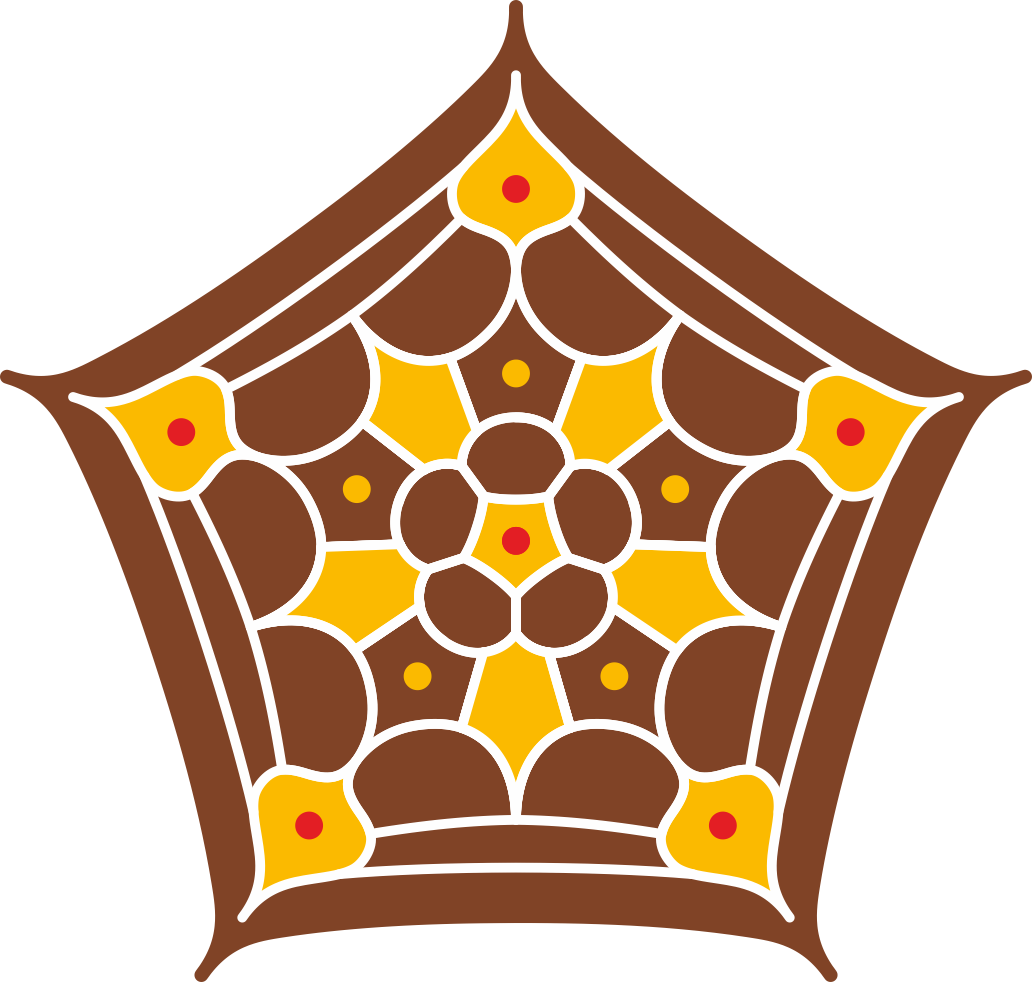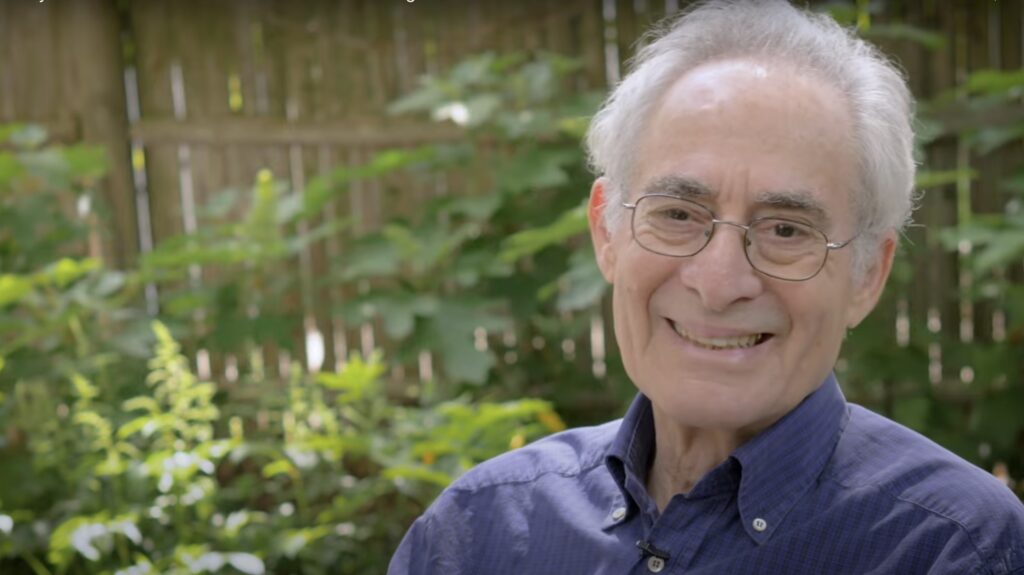
Attracted to mathematics by virtue of it being the “philosophy of electronics’’ as Mazur recalls, he was admitted to a PhD program in mathematics at Princeton University despite not having any prerequisite degree requirements for the same. From his initial contributions to the area of geometric topology, Mazur moved onto algebraic geometry and then onto number theory where his unique perspective yielded profound results that were the cornerstones in Andrew Wiles’ proof of Fermat’s last theorem.
As a mathematics professor who has also taught philosophy courses at Harvard, Mazur’s view of the subject is broad and unfettered and stresses on the importance of imagination even in a field as rigorous as mathematics. In his own words “When it comes to mathematical inspiration, the imagination could be considered the ghost in the rational machine of proof-making.’’1
One has to only read Mazur’s book Imagining Numbers: (particularly the square root of minus fifteen) to recognize that he is equally gifted at exposition, with an ability to communicate complex mathematical ideas to students at all levels. He also remains a pivotal figure in the mathematics community having guided a long list of students who have gone on to become distinguished mathematicians themselves.
At 87, Mazur remains as active as ever. In this long insightful conversation with Vijay Patankar at his home that reflects his philosophical outlook on life and learning, he talks about his Jewish upbringing in war time New York and the impressions it left on him, his atypical approach to teaching, the role of computers in the future of mathematics, his encounters with luminaries such as Jean-Pierre Serre and Robert Oppenheimer, as also the constant rapport with his wife Gretchen whom he considers integral to his success.
On behalf of the team Bhāvanā, I want to thank you for agreeing to talk to us. While researching for this interview I came across this absorbing documentary2 that Oliver Ralfe did with you in which you talk about your childhood. I would like to begin with the same. Could you tell us a bit about your early childhood?

BM: Well, I spent most of my childhood in the Bronx, New York. I was largely brought up by my maternal grandmother who initiated me into the Orthodox Jewish tradition under the tutelage of my great uncles (who were ultra-Orthodox). I went to yeshiva3 when I was a kid. I started school when I was about four years old. I loved it. That time (which included the full extent of the Second World War) was intense. War orphans from Europe would, every so often, appear in our classroom as new students. I am not sure how much money the yeshiva had; it was a ramshackle place. Many of the teachers, all rabbis, were, of course, deeply affected by the Holocaust. For an educational experience, I was perfectly happy. Looking back, I am amazed. I have no idea how they could have done such a good job with essentially everything else going on at the same time.
What was taught at that school?
BM: I would come in at six in the morning; there would be prayers before breakfast, and then we’d have breakfast; and then we had religious studies, the Bible, and in later grades, a good deal of the Talmud until lunch, which was at about 12 pm or 12:30 pm, followed by a recess of about an hour, followed by secular studies: English, science, etc., from 2:30 pm to 4:30 pm, and that was it – just two hours of non-religious studies. The whole thing somehow seemed to work, even though, as I said, a lot of the teachers were emotionally very affected by the catastrophe in Europe.

They managed to remain stable, perhaps.
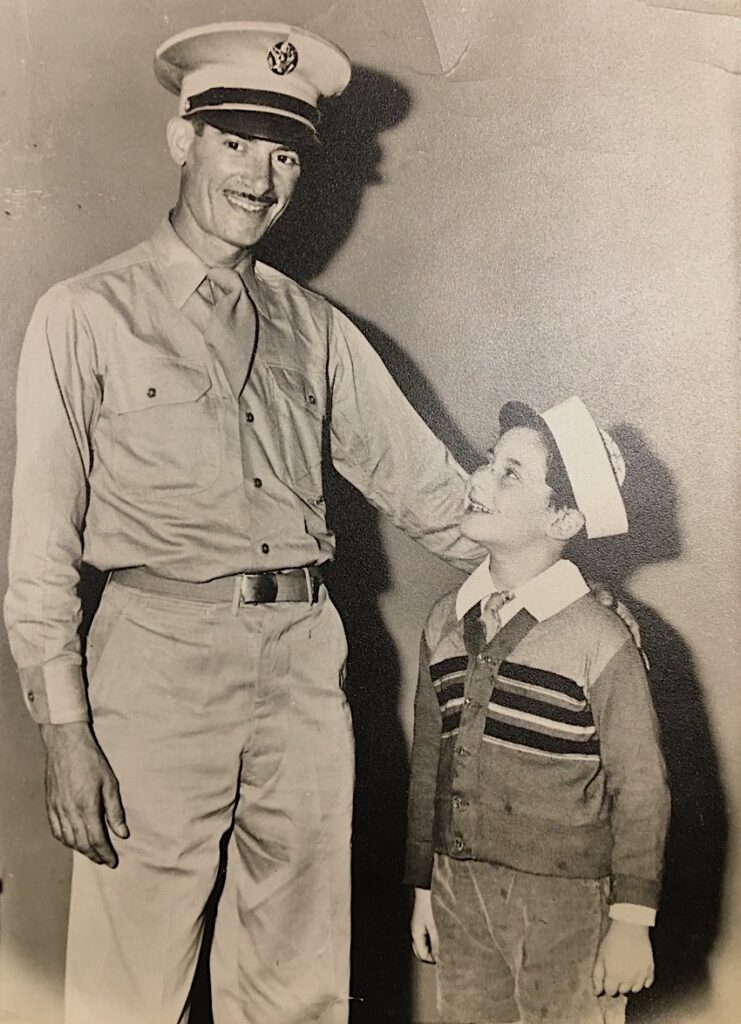
There is something that I had read and I don’t know if you have seen this. This is in an interview of Gian-Carlo Rota with Science magazine.5 Science asks him, “Why do some scientists remain active while others burn out?’’ And Rota says, “I have a one-word answer. It is the word `Kultur’. A broad cultural background, the learning at an early age in the family of the values of things intellectual, is the main factor that keeps people from burning out. That’s the reason many first-rate intellectuals come from Jewish or Chinese backgrounds, where they were exposed to intellectual values at an early age. The Talmud and the Tao are good trainers of scientific minds.’’
How does exposure to a religious environment—whether conservative or not—shape one’s values, resilience, and worldview, sometimes even unintentionally, through observation and presence alone? I am asking this in the context of the impact of this teacher at the yeshiva that you mentioned, who was obviously an intense person.
We are all little mice faced with an infinite cheese of knowledge. We are just nibbling on it, but will never devour it
Like a sheaf of thoughts.
How do you comprehend our universe? That is, how does one go about understanding it? Could we for example say that this universe, or this entire thing is God?7 Is that one good way of looking at it?
It appears to me that you have greatly benefited from such thoughts, and in the process, you have also gained spiritual strength. Do you think the intense religious and scholastic environment at your home and yeshiva helped you? Do you think these can or should be part of the upbringing of future generations?
Getting back to your early days, what were some of the other things that you enjoyed learning about at school. In the documentary by Ralfe, you talk about the philosophy of electronics.
electromagnetic fields are magic
What was the most fascinating part about it?
Then you moved to college – you went to MIT, to pursue your wish to understand physics, or electromagnetism to be more precise. Soon thereafter, you realized that the philosophy of electronics was mostly mathematics and you turned to maths. Do you recall any teachers from those times, friendships, or other experiences of lasting impact?
I really did want to understand it. There’s a classic novel called USA by John Dos Passos. The main character in the novel wanted—as we did—to understand America. He would go off and take jobs everywhere. He would take a job for a month or two and become totally absorbed in the surroundings and the nature of the job and the nature of the people who do that sort of job. The book was peppered with `newsreels’, inviting the reader to “understand America’’ via the daily news as well as via personal interactions.
The character in the novel would put books under his pillow (e.g., Henry George’s Progress and Poverty). And we thought, well, that’s what we want to do too, to take jobs everywhere. We couldn’t do this in school time, but we could do it in the summers. I went and took a job on a farm, on a dairy farm. I was a door-to-door salesman. I worked on a pier as a stevedore,11 a longshoreman, i.e., someone who carries loaded dollies from trucks on the pier to boats, to ships. We, both of us, also thought of ourselves as `writers’. I don’t think either of us wrote a word, but we were still `writers’ trying to do this. I did this throughout my high school.
Ten years later I met up with George again. He had continued to take all sorts of jobs. In Cambridge he worked in a biological lab at MIT. After a few years he continued his journey—going off to the South Pole on an expedition to discover the origin of life.
I lost contact with him again. Every year on my birthday I go on the internet, looking for some trace of him. The only thing that appears on the internet is his picture in the high school yearbook. (I’ll try again soon.) He shaped my way of thinking about a lot of things.
This is so touching! George is a kind of truth-seeker in a sense. Very free-spirited, and yet very strongly tied to values.
Is it possible to be a good philosopher-mathematician and yet have time for family and other things? How do you manage that?
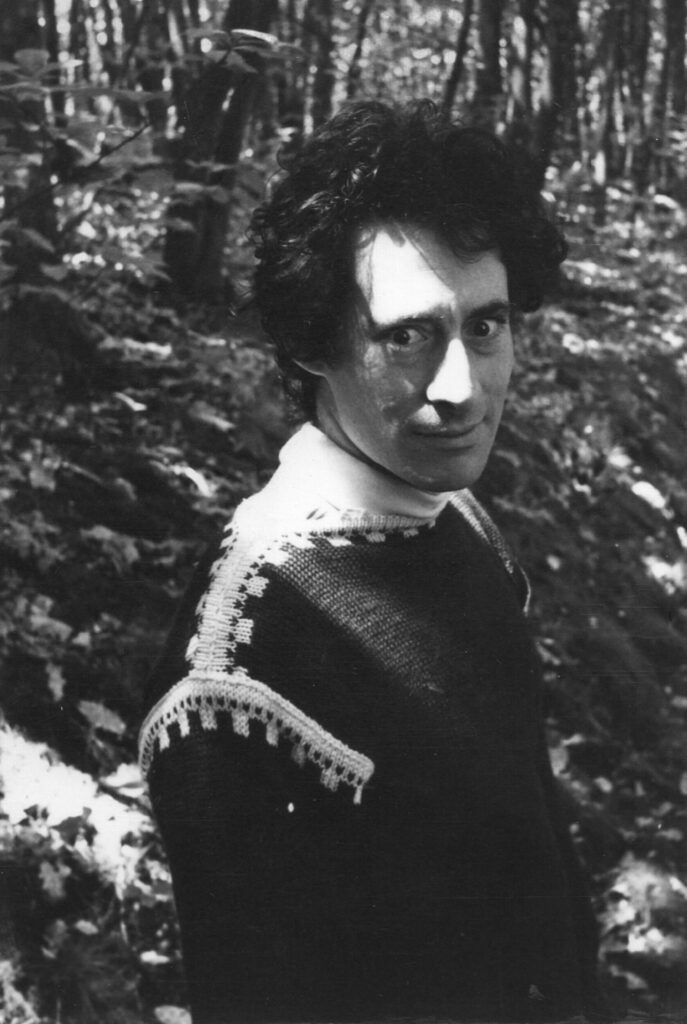
If anybody asks me anything, I send the request to her and she decides whether I would have the time to do that away from my family. And it’s her decision and if she writes “No”, it’s a “No”; I mean I don’t have a second thought about it. And the “Yes” is rare. That’s how I organize my program and then, you know, that leaves time for activities, but of course, one always wants more activities.
I believe Gretchen has a science background too – a PhD in cellular and developmental biology from Harvard, and is now a fiction writer. Have you two collaborated formally on any of your projects?
In your article “The Consolation of Math in Plague Time’’,12 you write: “Happily, in good times, there is such exhilaration in doing mathematics—and in bad times: consolation.’’ And you talk about the intention to learn a bit about the mechanisms of forecasting data science and handling data. You also talk about something called gems of constancy in that article. What are these gems of constancy?
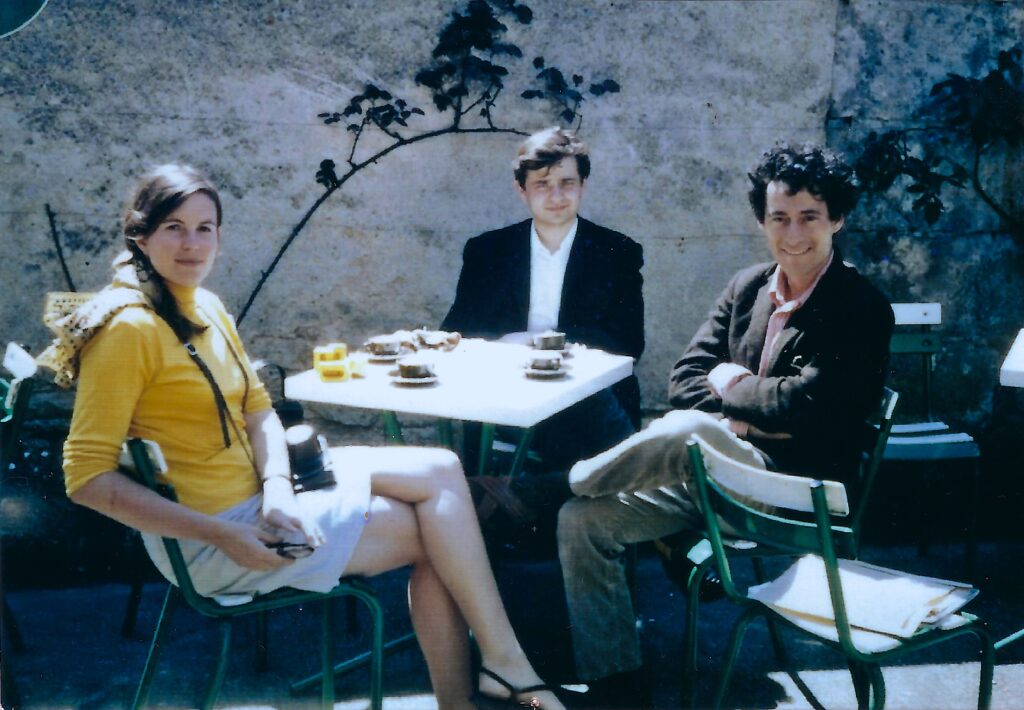
So via these and your work, you were able to continue to do maths, or keep thinking without so much of a fixation. And there too, I’m sure, Gretchen’s presence and her filtering, if you like, helped.
The other thing is we write… It depends on the time. In the summers, we very often, after dinner, write poems. The poems could be just poem sketches. It’s not as if one spends all night doing it. But we put our minds to that for a few minutes, maybe for half an hour. And then, when she has a birthday, I send her a hundred of them.
That’s wonderful. That is so nice and so interesting! Do you have any advice for young people who wish to pursue a career in mathematics but aren’t yet able to make up their minds, or convince their parents?
don’t ask: “Do I have talent or not?” Rather ask: “Do I have a question, out of my pure curiosity?” That’s a pretty good sign
Many students struggle with maths and are therefore put off by it. What is your advice to students who are studying, or planning to study the subject?
Does your learning happen more by reading and by talking to colleagues, or as the need arises, possibly while solving a problem itself? Could you please reflect on the processes of learning?
don’t worry about the people who seem to have gone much further than you. Just appreciate what you’ve done fully.
The perception about mathematicians is that, generally, they are direct and that they find it difficult to make untrue statements. First question: Do you have any comments on that? Second question: Do you find it difficult to deal with people who are obtuse?
Is it lonely being a mathematician, given that only a handful of people truly understand your work?
Sufficient critical mass. And often it is a dialogue with oneself too, I suppose.
Many consider maths to be the language of the universe, through which we understand everything. Well, most things. What are your thoughts on this?
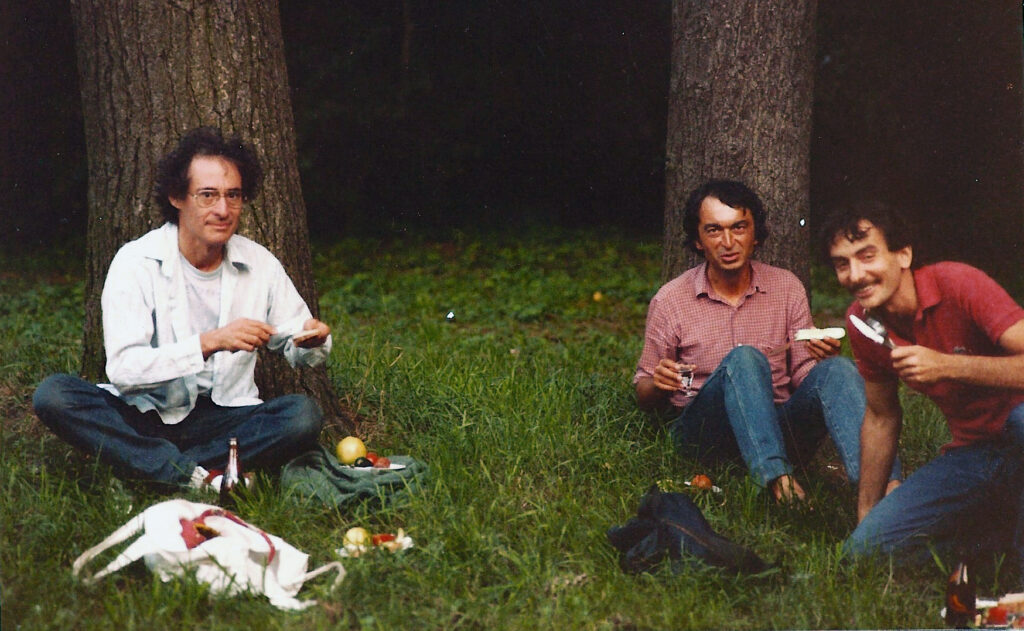
Any views on the works of Ramanujan, Chowla, and Harish-Chandra?
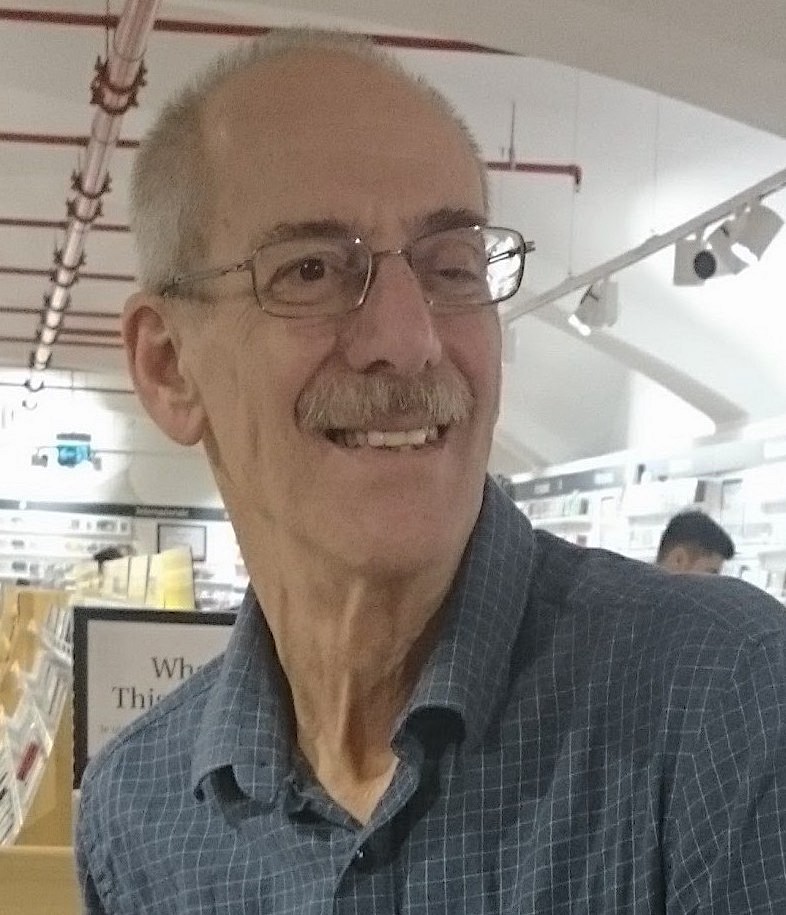
Chowla, I am certainly influenced by his work, his work with Selberg, yes. Harish-Chandra, equally so. With Harish-Chandra the connection is an interesting one, that dates back to when Gretchen was 18, and the two of us were in Paris for the year, so that is 62 years ago.
My younger brother, Joseph, had been working part-time as an architect, The two of us would constantly discuss mathematics. He became more and more interested in the subjects we were discussing—and at one point Joe said that he wanted to become a mathematician.
So I said, “Hey, we are going to Paris in a few months, why don’t you come to Paris, sit in on mathematics classes, so you will learn French and mathematics at the same time?’’ Now that is something I would never tell any of my students nowadays. Anyway, Joe came along, he learned French, he learned mathematics and he went to a course of Harish-Chandra, who was lecturing there, and I think they became friends; or, if not friends, at least sort of more than just a student-teacher acquaintance. So, if there is a connection between Harish-Chandra and me, it would be through my brother.
So is Joseph a mathematician too?
And again, perhaps he was also influenced by the same teachers, Mosey and others, at your yeshiva?
Any other memories or special memories from visits to other places, especially outside the US? For example, you have for long been a frequent visitor to IHES.14
And there was Grothendieck, who was wonderful. I wrote a very short piece about my personal feelings for Grothendieck. It’s called “Thinking about Grothendieck”.15
Mathematics is not the only mode of understanding.
Did you form any lasting friendships in Paris and at the IHES, during your visits there?
Oh, that’s such an interesting and amusing anecdote!
I suppose you had already finished your thesis at Princeton in topology and were employed at Harvard, and visiting IHES. Serre, who had also started his career in topology and moved to number theory, was in Paris. Any memories about Serre that you would like to share?
Here is one thing that I was told he did, and that was a kind of revelation to me. He had written a draft of a mathematical paper and put it in his drawer. Weeks later, without looking at that draft, he made a new draft. He did this a few times, and it was only when his newest draft was, word-for-word, identical to the previous one that he felt it ready to be published. This shows such intensity and such striving for a level of excellence of exposition. It is remarkable.
In an interview with Anthony Bonato,16 you speak about an anecdote with Oppenheimer when you were a postdoc at the Institute for Advanced Study, Princeton. He drove you to J.W. Alexander’s house.
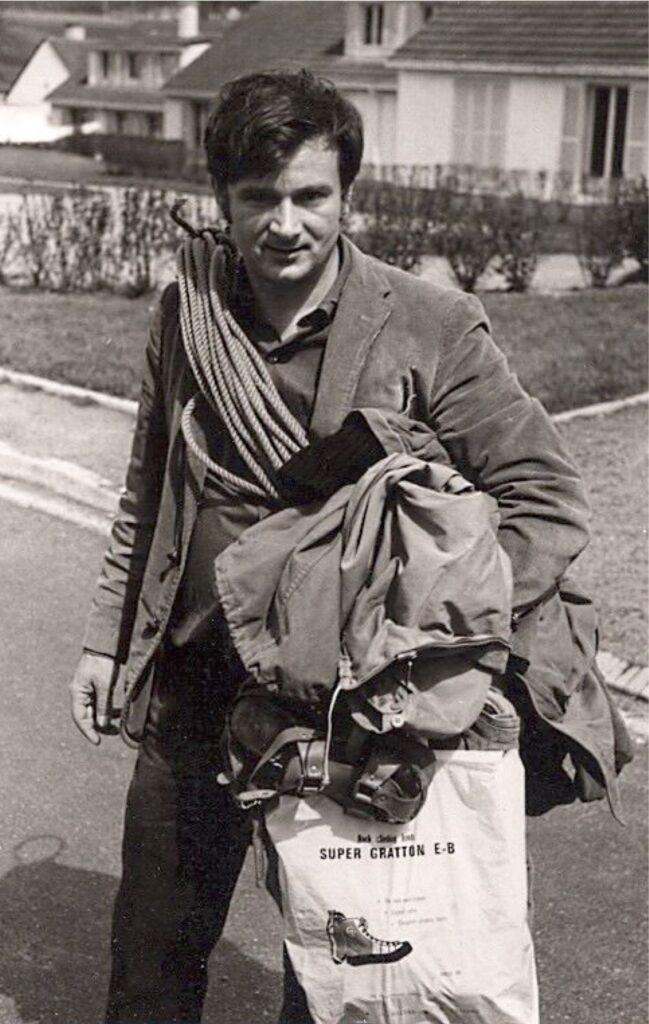
How did it come about?
It was his initiation. Remarkable!
When did you start seeing yourself as more of a philosopher, or thinker, than a mathematician?
Very much the way Saunders Mac Lane and [Samuel] Eilenberg thought of their own attitude towards mathematics in general as a broadening. We normally say abstraction. There’s a difference between abstraction and a broadening that changes the perspective of things. So wouldn’t you call that a bit of philosophy right there?
Mathematics has an aura which is way beyond what we label as mathematics.
Yes, certainly. What role do naiveté, fearlessness, determination, and skill play in doing mathematics? I will explain why I am using the word naiveté: In the Biographical memoirs on Harish-Chandra by Langlands,18 he talks about knowledge hindering creativity or imagination. So perhaps the element of naiveté, of fearlessness, is playing a role?
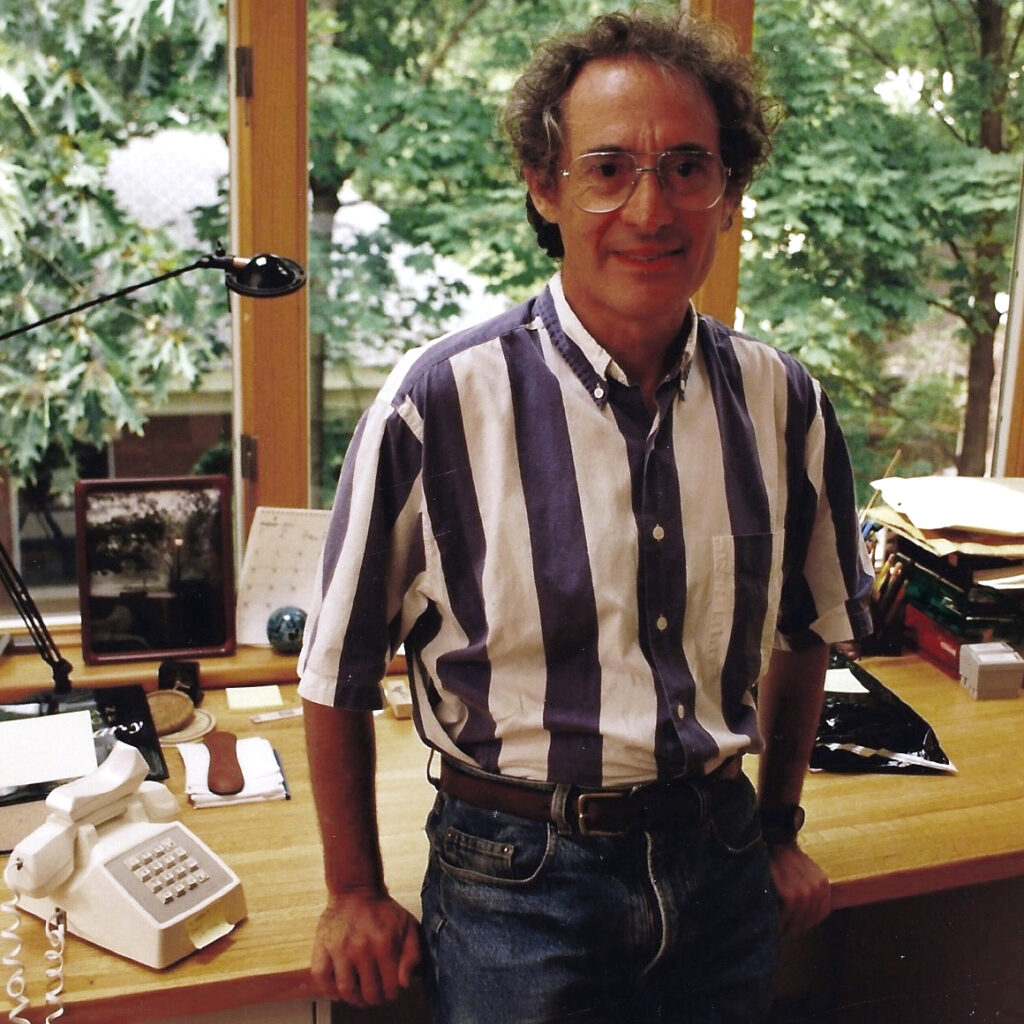
It reminds me of what we did in yeshiva: every time we finished reading certain specific portions of the Bible, we would shout, “Chazak, chazak v’nizchazek!”, which means “Be strong, be strong and may we be strengthened”, and we’d immediately begin reading the first sentence of that portion of the Bible again. So the shout “we don’t even know the unit interval” has the same feeling. You think you’re done but you’re not done and there is more that is yet to come.
The cyclicity and the nibbling at the infinite cheese.
How about the role of luck in maths or life?
You have many collaborators. I counted 65. Mathematics is generally considered a solitary activity. While that is so, and indeed, you have authored quite a few, very long solitary articles, it is also amply clear that you enjoy collaboration. Would you like to make any comments about working with others?
No matter how broad your viewpoint is, the minute you have someone else in the room, it produces something that is broader, and it is an education
On the mathematics genealogy webpage19 – you have 59 students and 347 descendants! That is a pretty long list of stellar students and grand-students! Would you like to say a few words about any of your students, for example, Ofer Gabber?
Do you give or suggest projects and questions to your students or do you expect them to find on their own? Do you change your strategy as per the student’s personality and skill set?
Depending on the student, yeah. I had [Vladimir] Voevodsky, who came from Russia, as a student. I did not tell him anything at all. Often, I would say to students that the main thing they should be focusing on is to develop their sense of questioning. It’s the art of questioning; I don’t think there’s any textbook that has that. There are some hints, like in George Polya’s Mathematics and Plausible Reasoning.
If you read that book, you get a sense, you get a good sense, of what it might mean to develop your instincts and your initiatives for questioning. I wrote a paper somewhere called “Questioning Answers”,20 where I said you should be doing this, no matter what level of mathematics you’re at. I don’t think it’s a broad educational program anywhere in mathematics, but it should be mentioned and emphasized.
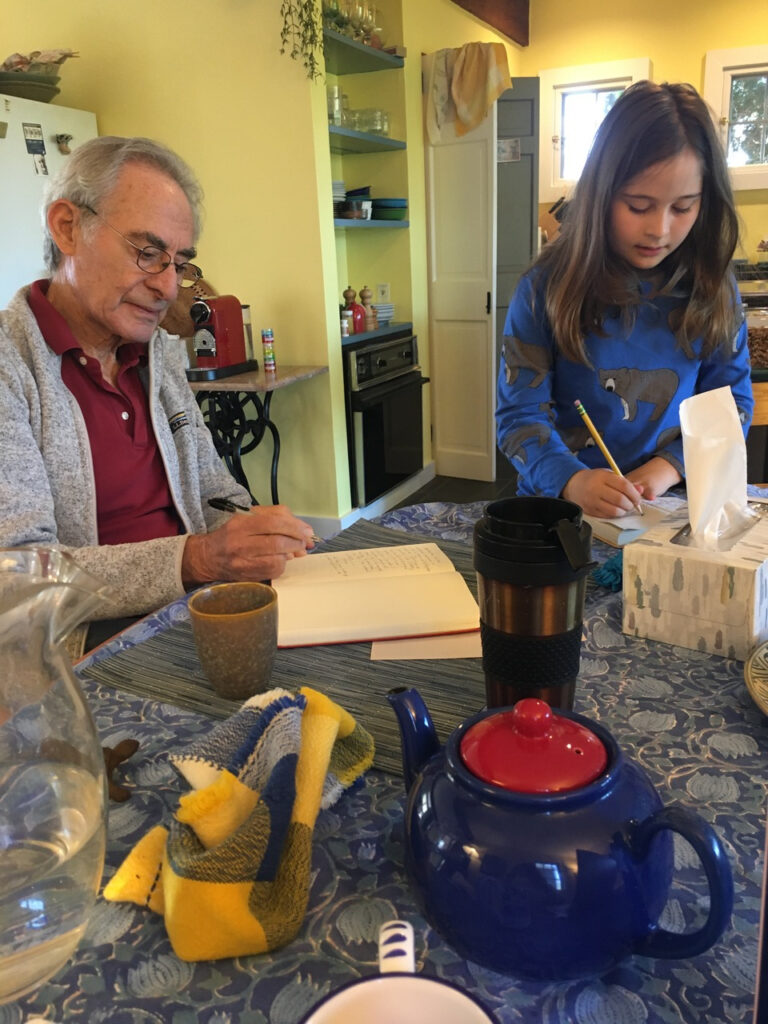
That’s wonderful. Have you had the opportunity to collaborate with non-mathematicians too?
The theme of that course was that evidence is an important word for many different subjects, and it means such different things, in those different subjects.
What does it mean for people in a given field to come to agreement that the evidence gathered is sufficiently conclusive to declare that they have achieved a specific result? To get a sense of its larger profile we invited guest speakers from various fields. Each of these people would give a reading list for our students, and we would have a session of the course where we would talk about that reading. Then the next session of the course would be a lecture by that guest speaker along with a seminar discussion. The following session would be a post-mortem about the reading, the discussion, and the lecture. So, it would be a triple for each subject. We did it over the semester for quite a number of subjects. The next to last session was mathematics—that was the session that I ran. The last one was law, run by Noah Feldman. It worked very well.
The main thing students should be focusing on is their sense of questioning
That was the first such course I gave—centering on the broad meaning of a single concept. There were many similar courses afterward: a number of history of mathematics courses, maybe a decade of them which I co-taught with various people.
And then came the philosophy department courses taught by the three of us: Amartya Sen, whom you must know, Eric Maskin, who is a mathematician-economist, and me. We would focus our course on some single word. For a student to be accepted in our course, the interested student would have to send us three things: their CV, a reason why they want to take the course, and what they would bring to the course from their background, their interest, and their experience. We would shape the course based on the background and interests of the students we admitted. So if there were more mathematicians there, the course would be more mathematical.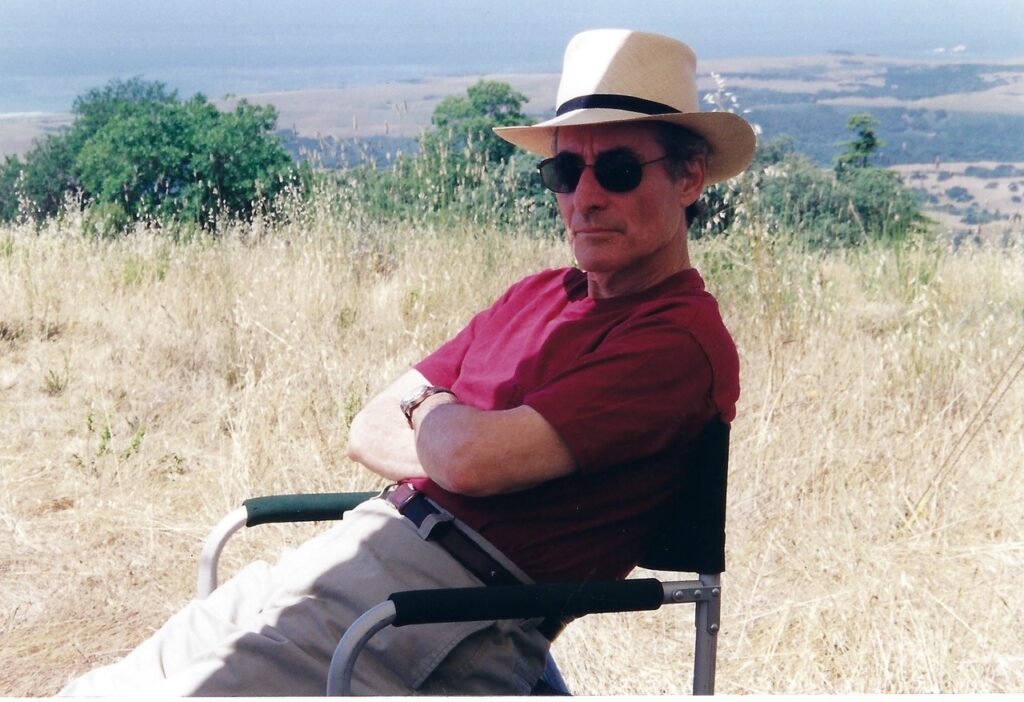
The `word’ for the first one of these courses was Models. For example, mathematical models, economic models, medical models, biology-related models, and so on. Then the second was Utility. Utility and all the graphs of utility and the St. Petersburg paradox. Loads of paradoxes, in fact, about utility—and the variants of the notion utility in other contexts as well. Then the third course was Axiomatic reasoning. The fourth was, Subjectivity/Objectivity. The fifth was Truth. The sixth, Rationality, the seventh, Equality, and the one that occurred this fall semester was Intuition.
The mission of the students is to engage with the general discussion, contribute specific insights that come from their field of study, their area of experience, and—of course—write their final paper. They were asked to write an initial draft that would, in some way, incorporate or involve the seminar discussion, the conversation that we’ve had. So it would have to be a good deal broader than if they were writing a technical essay regarding the meaning and use of `the word’ with in their own subject.
If you go to my webpage,21 I have my handouts for all of those courses.
So the final thesis or the essay that they write, would include all the different facets?
What does hard work mean to you? And, what is your usual work schedule at Harvard?
As for my daily work schedule at Harvard, of course there are courses, committees, office hours, that interlace the schedule of anyone in academia. The intermittent times—besides the time devoted to exercise, and meals with people—well, those are my work times, often a collection of half-hour, or single-hour moments during the day.
Dinesh Thakur mentioned to me that a University Professor at Harvard can teach any course anywhere within Harvard!
Reading of Kant’s critique of judgement? Wow. Lucky students, I would say. About where the future of maths is headed, the role of AI: This is an obvious question to ask. Recently there was news about Google AI solving IMO (International Mathematics Olympiad) problems, and getting a silver medal. I wanted to know what you think? Also, there is this formalization, and verification and clarification of proof that Peter Scholze used related to his liquid tensor experiment. It seems it provided him with a certain pathway and a clarification of the proof that he had. Or, it might have provided some steps. In any event, the Lean22 language system kind of clarified certain aspects about the proof and definitely helped with some details. Do you have any comments about that?
AI and Lean are further computational developments that will allow us to live with mathematics more easily
Well, with LMFDB, it doesn’t matter how much maths you know, well almost. You can just walk through the forest of data and learn something that you would never have learned theoretically. Not because you’re learning something statistical or you’re learning something computational. You’re getting sort of a real sense in your central nervous system of the data that is immediately available all around you. You can type into LMFDB: how many fields of degree seven have the property that they’re monogenic?24 That’s something that you in earlier times could not even get a sense of without loads of effort, and time. But if you’re interested in learning a little bit about the forest of mathematical objects that you’re going to work with theoretically, and if you just want to walk through it, well, you have it all right there with a click of a button in the LMFDB site and you get a vivid picture of those mathematical objects. I think that type of picture is of a different nature than a purely statistical sense. You get a better feel of the subject than any theorem that gives you a statistical statement. It has a different feel. It’s neither better nor worse, but a different feel, just by wandering through the terrain of particular numerical examples so easily with their salient properties displayed; getting a sharp sense of them—even though you are merely browsing through. Now, that’s so new. And LMFDB will give you a load of detailed invariants vital for the understanding of any modular form that interests you. The fact that we have AI and we have Lean, I don’t think of it as a revolution in the very nature of mathematics. It is rather a further computational development that is going to allow us to live with mathematics more easily.
One of the future possibilities is that mathematicians will provide ideas, steps, pathways, and computers, while Lean and similar frameworks and proof systems will provide proofs by filling in technical details.
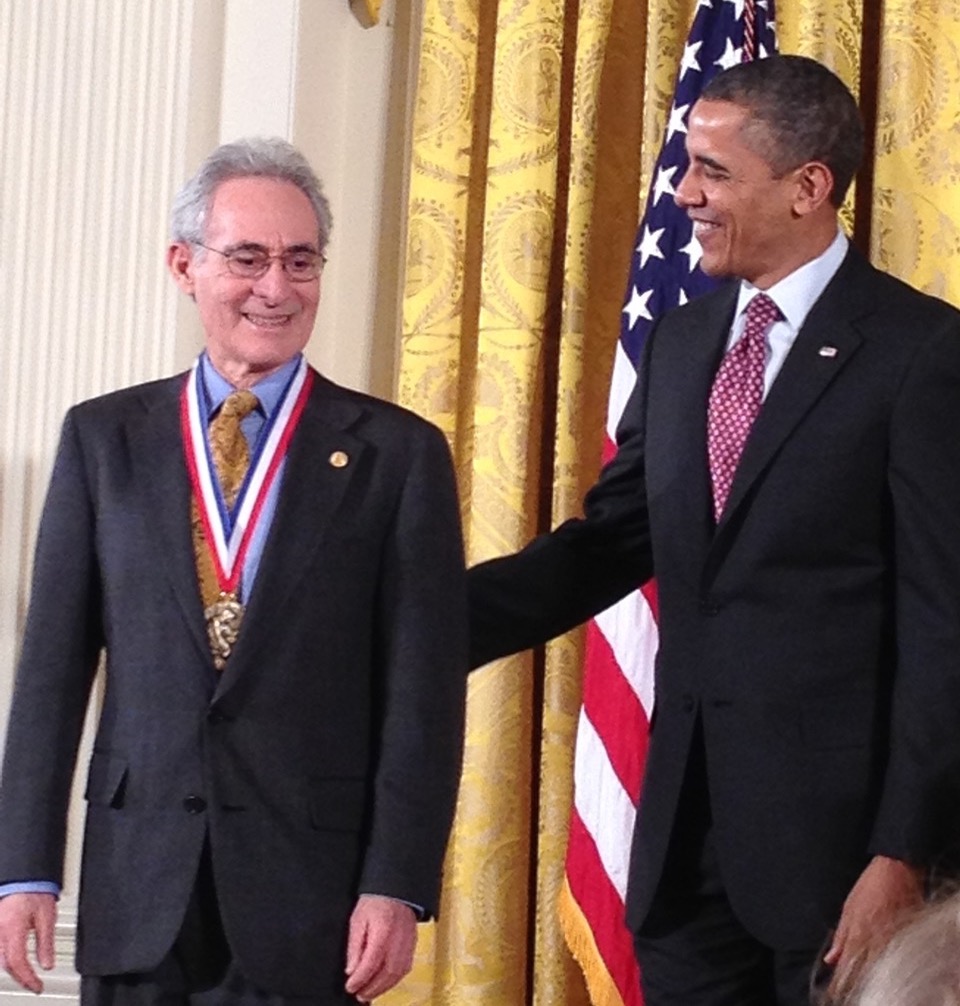
You co-authored a book with William Stein about the Riemann Hypothesis titled Prime Numbers and the Riemann Hypothesis. Would you like to talk about it? Do you think it will have an algebraic proof or an analytic proof? Or would it be difficult to predict or expect any specific methodology or possible approach to it?
On the broadening of perspectives, what do you think would be the role of recent developments in topology in the future of number theory? Especially the notions such as the infinity category, and the higher homotopy theory…. I ask you because I think it was you who brought in the notion of “arithmetic duality’’ in your IHES notes.
How do you approach maths? Do you, for example, see examples as seeds, and nurture them, you kind of broaden around the examples, which grow into trees?
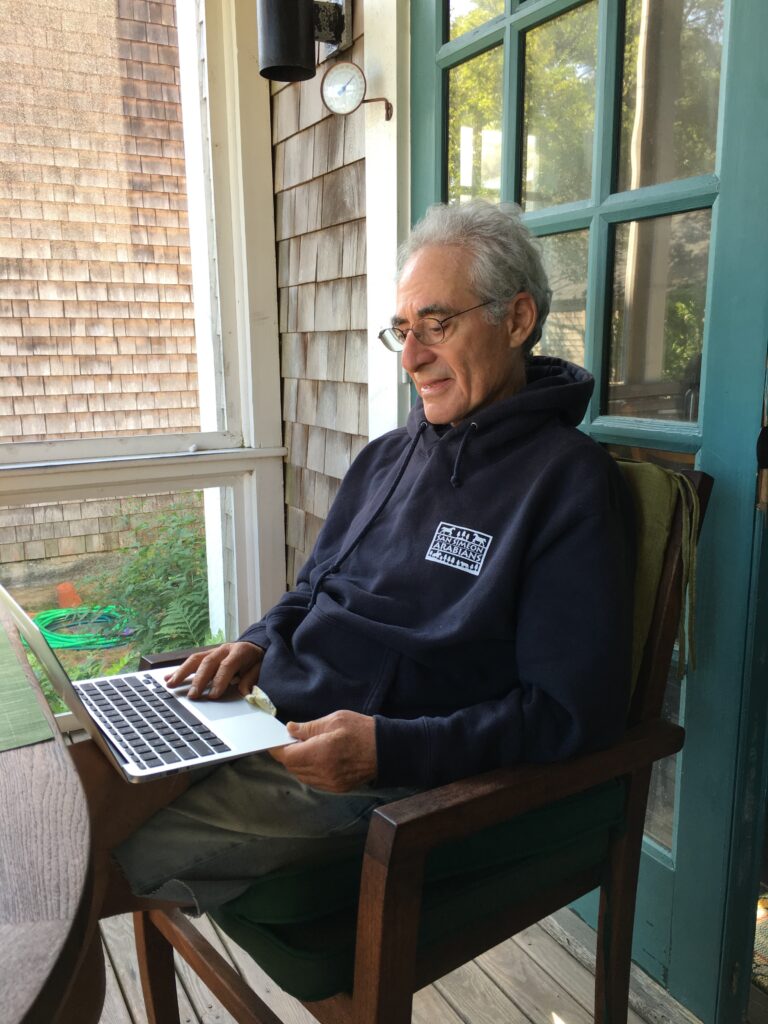
One has to have an eye for such examples in some sense. The intuition perhaps, that there is much more to it….
Perhaps related to this, you talk about the role of conjectures as well.
Communicating an idea to someone with a different background forces you to rethink that idea and gives you a new perspective
How did the Fontaine–Mazur conjecture come about? Was this during one of your visits to IHES, or was it done over a long period of time?
What do you feel is your most easy and highly influential work?
It’s basically a `take’ on the following easiest way of looking at the [crux of the] proof: The infinite sum 1+(-1)+1+(-1)+1+(-1)+\cdots can be interpreted to be equal to 0, because (1+(-1))+(1+(-1))+(1+(-1))+\cdots = 0+0+0+\cdots. At the same time it can also be seen to be equal to 1, because 1+((-1)+1)+((-1)+1)+((-1)+1)+\cdots = 1+0+0+0+\cdots. These interpretations are, of course, not valid for real numbers (since this particular series does not converge), but in an appropriate context in geometric topology where it is valid,28 it was used in my thesis to give a partial proof of the Schoenflies Conjecture. There’s a certain amount of technicality to deal with, in the summing of certain objects in topology, and to have it make sense at infinity, but other than that, the crux of the proof is just what I said.
Was point set topology, the kind that you spoke about earlier, helpful here?
And then gradually you moved from topology to number theory. How did that happen?
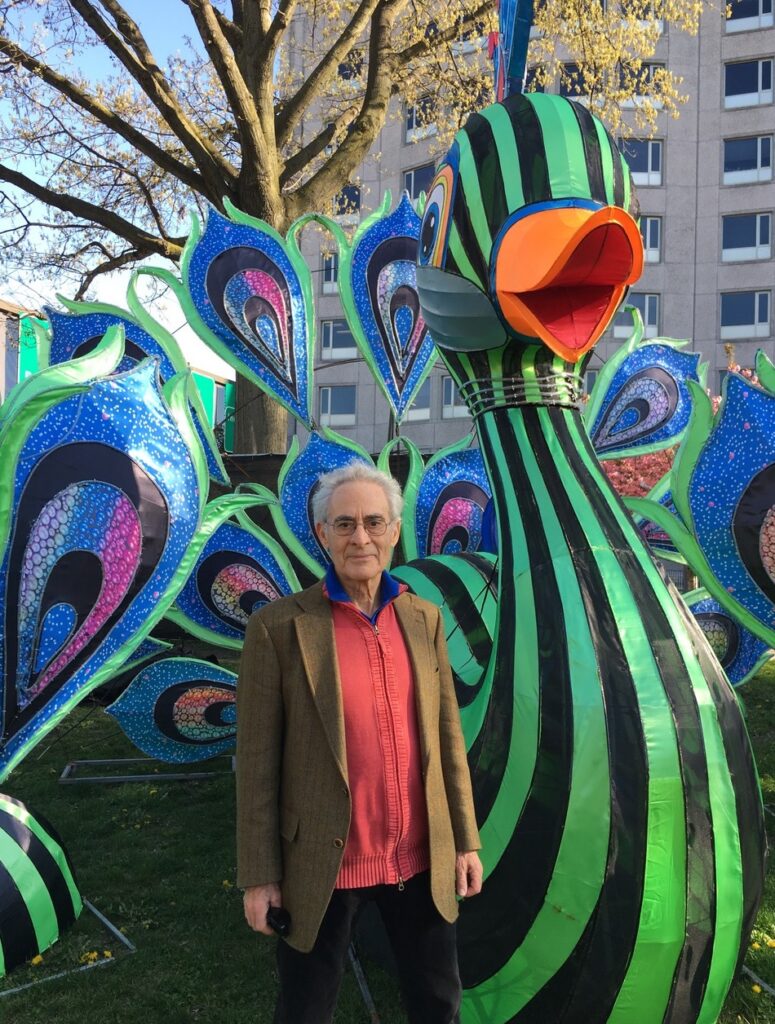
The scheme theoretic techniques and perspective show up very strongly in the Eisenstein ideal paper Modular curves and Eisenstein ideal.30 Based on my understanding, it is one of the first papers that uses the entirety of scheme theory to address a very number-theoretic problem of bounding torsion on elliptic curves over the rationals. Do you have any comments as to how that came about?
Is there any other question in mathematics (including number theory) that you have been thinking about, and to which you keep returning to again and again?
How about questions that you keep coming back to but that are not yet yielding?
Fascinating! Could you please comment on the role of patience and steadiness of thinking in the process of creativity?
I think this is not trivial. This cannot be taught. Perhaps this stems from your training at the yeshiva where you learned it – without being taught. One walks through rain and much later realizes that one is soaked!
One needs to be forgiving for not knowing
Do you think the process of writing expository articles or even (technical) mathematics helps you understand the very concepts you wish to expound?
How many projects do you work on at any given time?
At the end of Ralfe’s documentary, you talk about questions that should not be definitely answered. The questions that carry you, carry us, that are about the meaning of life. What are those questions?
Now, for a very practical question about the role of exercise, or regular physical activity, towards maintaining good health and building mental stamina.
Is there any specific award or honour that made you happier than others?
Here is a question related to the existing proofs of Fermat’s Last Theorem that bugs me – we have two or three (not totally unrelated) but different proofs of the Shimura–Taniyama–Weil conjecture about the modularity of Elliptic curves defined over the rationals. So, even though there are these proofs, it is still not clear as to why such a thing should be true! It is very mysterious. Do you think that this kind of question as to why this is true is wrong to ask? Or is it something that people have understood now and that it is now totally obvious?
We should leave a certain amount of flexibility, and allow for the possibility that we will know something better later than we do now.
Why is it expected that, something on the one hand such as the L-function (attached to a given elliptic curve E over the rationals), a complex valued function of a complex variable—a kind of a generating function—which is defined using point counting data at all the prime numbers, is a modular form, or simply put, has to satisfy certain very precise symmetry properties? I find this very bizarre and mysterious – what do you think?
I want to mention to you a simple calculation based on a probabilistic formalism and how that proves the formula \sum_{n=1}^{\infty} (1-p) ^n = \frac{1}{p}. Let us consider the experiment of tossing a coin until one gets a Heads (assume that the probability of getting a Heads for a single toss of the coin is 0 < p <1. Since, upon successful tosses one will eventually get a Heads, the probability of getting a Heads is equal to 1. On the other hand, the probability of getting a Heads after exactly n tosses is (1 -p)^{n-1} p. Hence, we get another much more transparent proof of \sum_{n=1}^{\infty} (1-p) ^n = \frac{1}{p}.
By analogy, something similar may also be true regarding Taylor–Wiles’ Theorem (Shimura–Taniyama–Weil conjecture) – perhaps we do not have a fully satisfactory proof of it as yet?
Yes! And at the same time, I wonder about the power of formalism that leads to a certain “obvious” understanding of truths that are non-obvious and mysterious, and yet the entire structure is based on “simple” axioms. I mean, it is a mystery to me that it can be like that.
In the video titled “Barry Mazur on Algebraization”, you talk about “finding x” and the associated deep idea of Kronecker. Later on in the same video, you mention the analogy “Algebraization” in literature; that is, language retreating from content, and by purposely keeping the content covered, as a secret, leading to revelation of a new attribute or a new invariant, that was until then invisible – and that is different from any previously associated “attribute”. As if, this act of hiding it as x in a velvet bag keeps away any previous biases, thus saving us from getting blinded by the known bright attributes, thereby forcing us to use our “inner light” and the x to interact directly to possibly reveal something new about x. Would you like to say something about this?
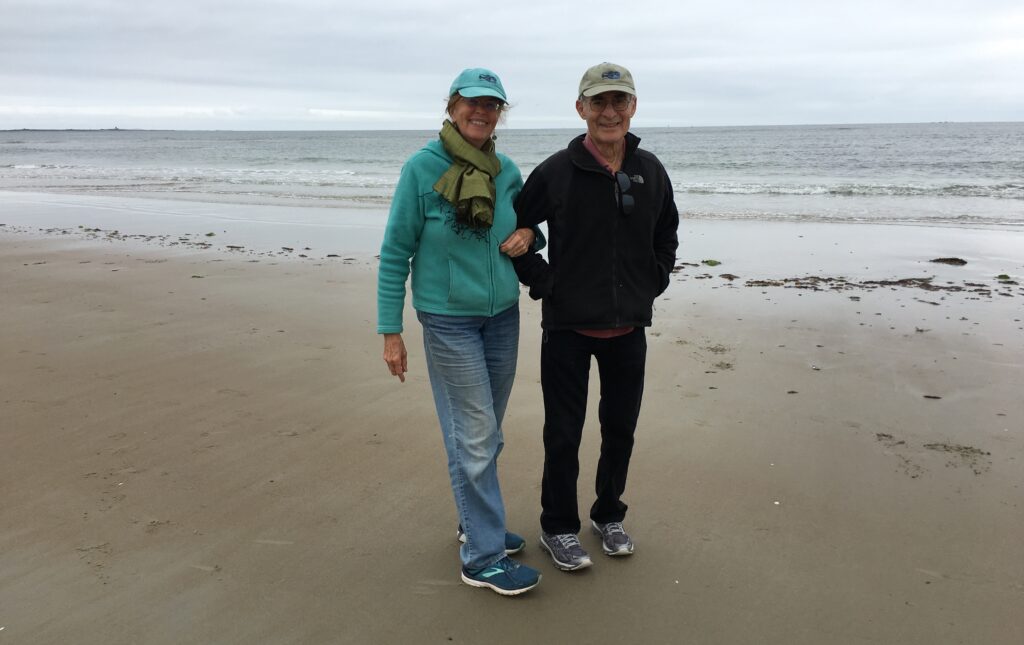
As we come to the end of this fascinating conversation, I wonder if you have plans of visiting India. It could provide an opportunity for Gretchen to enjoy listening to live Indian classical music?
Thank you very much Barry for your patience, and a lively and insightful conversation – dwelling on the kind of creative processes that have shaped your academic bearings and how they led to a rich, prolific, and accomplished career. It was absolutely delightful to listen to you, and to enjoy your and Gretchen’s very warm hospitality.
Acknowledgements We are grateful to Shilpa Gondhali for her ever willing help with timely transcribing of the audio recordings. We thank Sneha Patankar for immense help with editing the raw transcript.\blacksquare
Footnotes
- https://www.nature.com/articles/483405a. ↩
- Available on YouTube at https://youtu.be/bEf26NFur3w. ↩
- A yeshiva is a Jewish school or college where students study religious texts. ↩
- Tourette syndrome (TS) is a neurological disorder that may cause sudden unwanted and uncontrolled rapid and repeated movements or vocal sounds called tics. ↩
- Available at http://giancarlorota.org/essays/rotasharp.html. ↩
- A Hegelian synthesis is a philosophical concept that refers to the resolution of a contradiction between a thesis and an antithesis to create a unified whole. ↩
- The opening line Īśāvāsyamidaṃ sarvaṃ yatkiñca jagatyāṃ jagat of the Vedic text Īśāvāsyopaniṣat, which [in translation] says “each and every entity in this universe is enveloped by the Lord”, perhaps conveys almost the same sentiment. ↩
- Baruch Spinoza was a Dutch philosopher of Jewish origin. Considered one of the most influential philosophers of the seventeenth century, Spinoza has deeply influenced modern Western thought, including that of leading scientists such as Albert Einstein. ↩
- A Greek philosopher, regarded by modern scholarship as the founder of Neoplatonism. His teacher was the self-taught philosopher Ammonius Saccas, who belonged to the Platonic tradition. ↩
- It is a wave whose peak amplitude does not move in space, and hence “standing’’. It is usually produced as a combination of two waves moving in opposite directions, each having the same amplitude and frequency. ↩
- A stevedore is a person employed at a dock to load and unload ships. ↩
- page 40 of the book, Math in the Time of Corona https://link.springer.com/chapter/10.1007/16618_2020_8. ↩
- https://worldfinancialreview.com/category/columns/understanding-war/. ↩
- https://www.ihes.fr/en/. ↩
- Available at http://nrs.harvard.edu/urn-3:HUL.InstRepos:34798399. ↩
- Page 123, Chapter 10, Limitless minds: interviews with mathematicians by Anthony Bonato, AMS, 2018. ↩
- Oppenheimer was the Director of the IAS at that time. ↩
- Published: 01 November 1985, in Biographical Memoirs of Fellows of the Royal Society, Volume 31. https://doi.org/10.1098/rsbm.1985.0008. ↩
- https://genealogy.math.ndsu.nodak.edu/id.php?id=11730. ↩
- https://bpb-us-e1.wpmucdn.com/sites.harvard.edu/dist/a/189/files/2023/01/Questioning-answers.pdf. ↩
- https://sites.harvard.edu/barry-mazur/. ↩
- https://lean-lang.org/. ↩
- https://www.lmfdb.org/. ↩
- https://en.wikipedia.org/wiki/Monogenic_field. ↩
- https://en.wikipedia.org/wiki/Field_with_one_element. ↩
- https://www.jstor.org/stable/20117628. ↩
- https://api.semanticscholar.org/CorpusID:37896421. ↩
- This technique has come to be known as the Eilenberg–Mazur swindle (see https://en.wikipedia.org/wiki/Eilenberg\%E2\%80\%93Mazur\_swindle). ↩
- On Periodic Points, M. Artin, B. Mazur, Annals of Mathematics, Vol. 81, No. 1, Jan., 1965. ↩
- Publications Mathématiques de l’IHÉS, Volume 47 (1977), pp. 33–186. ↩
- Ogg’s Torsion conjecture: Fifty years later—https://arxiv.org/abs/2307.04752v2. ↩
- Oswald Veblen Prize in Geometry – awarded in 1966 along with M. Brown and S. Smale. ↩
